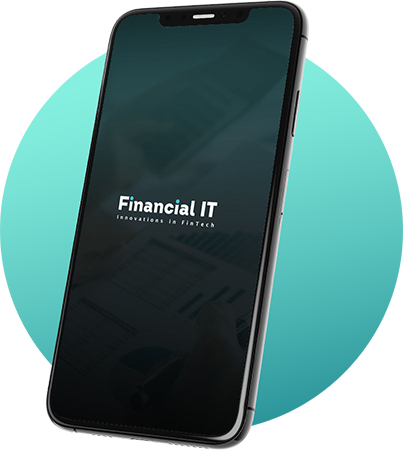Published

Deepthi Rajan
Head - Technology Upskilling and Communication at Societe Generale
In August 2017, India’s highest judicial office, The Supreme Court, upheld the right to privacy as a fundamental right of the country’s citizens. see more
- 05:00 am

Instagram has stealthily added an in-app payments feature to its app for some users in certain regions. It allows users to register a debit or credit card as part of a profile, set up a security PIN, then start buying things without ever leaving Instagram.
Not having to leave for a separate website and enter payment information any time you want to purchase something could make Instagram a much bigger player in commerce, a spokesperson confirmed that in-app payments for booking appointments like at restaurants or salons is now live for a limited set of partners.
One of the first equipped is dinner reservation app Resy. Some of its clients’ Instagram Pages now offer this in-app payment for booking. And in the future, Instagram says you can expect direct payments for things like movie tickets through the app. Instagram initially announced in March 2017 that “we’ll roll out the ability to book a service with a business directly from their profile later this year,” but never mentioned native payments.
We’ve confirmed that the in-app payment settings are now visible; some, but not all, users in the US have it while at least some in the UK don’t. A tap through to the terms of service reveals that Instagram Payments are backed by Facebook’s Payments rules.
With its polished pictures and plethora of brands, shopping through Instagram could prove popular and give businesses a big new reason to advertise on the app. If they can get higher conversion rates because people don’t quit in the middle of checkout as the fill in their payment info, brands might prefer to push people to buy via Instagram.
Facebook started dabbling in native commerce around 2013, and eventually started rolling out P2P payments through Messenger. But native payment for shopping is still in closed beta in the chat app. It’s unclear if P2P payments might come to Instagram, but having a way to add a credit or debit card on file is a critical building block to that feature.
It’s possible that the payments option will work with Instagram’s “Shoppable Tags,” which first started testing in 2016 to let you see which products were in a post and tap through to buy them on the brand’s site. Since then, Instagram has partnered with storefront platforms BigCommerce and Shopify to get their clients hooked up, and expanded the feature to more countries in March.
But the whole point of Instagram not allowing links in captions is to keep you in a smooth, uninterrupted browsing flow. Getting booted out to the web to buy something broke that. Instagram Payments could make impulse buys much quicker, enticing more businesses to get on board. Even if Instagram takes no cut of the revenue, brands are likely to boost ad spend to get their shoppable posts seen by more people if the native payments mean more of them actually complete a purchase.
Instagram isn’t the only one who sees this potential. Snapchat started testing its own native payments and checkout feature in February.
Related News
- 07:00 am
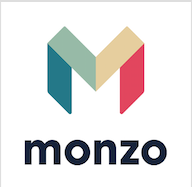
All the way back in March 2016, we launched the first version of Monzo-to-Monzo payments, letting you pay any of your friends on Monzo with just their phone number.
Today, we’re excited to announce the latest update to the PaymentsU tab: Nearby Friends!
Monzo Nearby Friends
Now, when you’re out for dinner with colleagues, you don’t need to have their phone number in your contacts. Everyone just opens Nearby Friends from the Payments tab and thanks to the magic of Bluetooth, you can see anyone else on Monzo nearby. To protect individual’s privacy, you can only see other people who also have Nearby Friends open at the same time. With a couple of taps, you can send them money and you’re done — say goodbye to laboriously reading out phone numbers!
How does it work?
We’re using Google Nearby, an API service enabling messages to be sent to other devices within close proximity so that your Monzo app can see other Monzo users nearby, but how does that actually work?
Right from the beginning, we knew it was important to not share any of your personal information with a third party during this process. When you open the Nearby Friends screen, we send an anonymous token to Google, who then broadcast that to devices nearby using Bluetooth. At the same time, the app starts listening for other devices nearby.
When your Monzo app discovers a device nearby, it receives this token, which can be exchanged for the name and profile picture of the broadcasting user via our API. We also receive an identifier which we can use to identify who to make the payment to. The token sent to Google expires after a short period of time.
We hope you like this update! Let us know what you think in the forum.
Related News
- 04:00 am
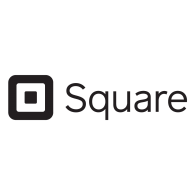
Square, Inc. (NYSE: SQ) today launched Square for Restaurants, a fully integrated point of sale that matches the pace, complexity, and specific needs of today’s restaurants.
Square for Restaurants is the company’s first solution built to serve full-service restaurants, and brings the speed and ease of use for which Square is known to all types of larger restaurants, bars, and lounges. Square will also integrate Caviar directly into Square for Restaurants, marking the first time restaurants will be able to benefit from the simplicity of a combined first-party ordering platform and point of sale.
Square for Restaurants is Square’s most sophisticated software solution yet, enabling fast, accurate operations for both the front and back of house. It’s cloud-based and customizable for however a restaurant is run, letting managers easily update menus and floor layouts remotely across multiple terminals and locations. New conversational ordering enables waitstaff to place orders quickly and intuitively, the way diners speak. Square for Restaurants also offers built-in employee management to enable staff time and performance tracking, tip splitting, fraud protection, and more.
“Square for Restaurants offers everything you need to run a restaurant at full speed — with none of the distractions or pain points you don’t want,” said Alyssa Henry, Seller Lead at Square. “Now, we can serve larger restaurant customers, as well as grow with those who have been using Square services from the start. With Square for Restaurants, we’ve created a cohesive solution to help our sellers supercharge their entire restaurant business.”
Businesses using Caviar and Square for Restaurants will also be able to see delivery and pickup orders directly within their point of sale — speeding up operations, reducing incorrect orders, eliminating the clutter of excess tablets, and giving restaurants an omnichannel view of their sales and diner base.
“Caviar’s experience working with thousands of top restaurants across the country gave us the unique insight we needed to build a one-stop point of sale with on-demand delivery integration,” said Gokul Rajaram, Caviar Lead at Square. “We’re excited to bring Caviar and Square together and let our restaurant partners grow their businesses through delivery in an even more effortless way.”
Over 100 restaurants and hospitality groups across the U.S. have already been using Square for Restaurants, including Bar Agricole in San Francisco, Boke Bowl in Portland, Oregon, The Populist in Denver, Greca in New York City, and Philadelphia’s CookNSolo group, which has implemented Caviar integration at Rooster Soup Co.
“There’s always going to be curveballs that the restaurant life throws at you — Square for Restaurants is not one of them. It’s robust while retaining that trademark Square elegance and hassle-free service,” said Michael Solomonov and Steve Cook, cofounders of CookNSolo Restaurant Partners. “At Rooster Soup Co., partnering with Caviar has shown that delivery orders can be an important growth lever for the business, so the fact that we can have Caviar integrated right into the point of sale is a game changer.”
Square for Restaurants rounds out the company’s vertical point-of-sale offerings, which include Square for Retail and Square Appointments for service-based businesses. With several vertical points of sale custom-built for sellers’ needs, Square can offer more tailored solutions to each industry it serves. Like other vertical offerings, Square for Restaurants gives sellers integrated access to Square payments processing and its full ecosystem of products and services, including Payroll, Capital, and more.
Related News
- 05:00 am
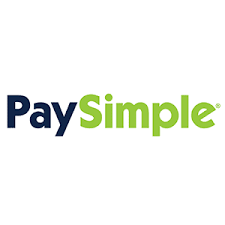
PaySimple, a leading Service Commerce platform for businesses, today announced their latest integration with leading accounting software, QuickBooks Online.
The PaySimple and QuickBooks Online integration combines the power of PaySimple's payment acceptance software, with the bookkeeping features of QuickBooks Online, giving merchants critical insight into their business's financial status.
When merchants connect their PaySimple and QuickBooks Online accounts, PaySimple payment data will automatically sync in QuickBooks Online in real-time. The integration runs in the background, requiring very little management from merchants and ensuring accurate accounting and tax reporting, a necessity for busy small business owners.
Manually uploading payment data into an accounting software is time consuming and subject to human errors, which can cause problems at tax time or when the business needs to share their books with another entity.
The PaySimple/QuickBooks Online integration is designed to solve this challenge with real-time syncing, eliminating lag time between a business's payment activities and their QuickBooks Online account. Transactions are updated in QuickBooks Online as soon as they settle when initiated through PaySimple, so there are never any discrepancies.
"PaySimple is dedicated to helping business owners focus on their passion by making payment collection easy and cost effective," said PaySimple President, David Sharp, "By integrating with QuickBooks online, we can go a step further by helping business owners ensure accurate accounting and tax reporting."
"We are giving our customers a distinct advantage by being able to sync PaySimple payment data with their accounting software," said Jim Olson, VP of Product at PaySimple. "Manual data entry is simply a waste of time, so this integration automates the process and reduces costly errors."
The PaySimple and QuickBooks Online integration is included at no additional cost in the PaySimple Pro and Enterprise offerings. PaySimple allows business owners to accept credit and debit cards, ACH, eChecks and recurring payments, making it a perfect option for service businesses in industries such as: home services, professional services, gym and fitness studios, schools and more.
Setting up the PaySimple/QuickBooks Online integration is as simple as a few clicks. Merchants can see their QuickBooks Online account start to update with all new transaction activity within two hours of activating the integration.
Related News
- 01:00 am

Today, digital growth company Urban Airship unveiled the first digital customer engagement platform to support Google Pay tickets — a new capability announced on the mainstage at Google I/O 2018.
Unlike paper tickets or emailed boarding passes, these mobile wallet tickets unlock new levels of convenience for travellers, with real-time updates (like departure time changes) sent to the lockscreen and personalised one-to-one messaging within the card. Urban Airship sends real-time updates on flight details, gate changes and other valuable information to 250 million travellers for more than a dozen airlines and major airports annually. Urban Airship’s Digital Growth Platform and its enterprise-class APIs enable companies to create personalized mobile wallet tickets and boarding passes at massive scale and deliver them through any digital channel, including apps, websites, SMS, email and other emerging platforms.
“As an online exchange with billions of dollars in ticket inventory for concerts, sports and theater events around the globe, we provide a host of solutions that better connect sellers and buyers,” said Doug Kruse, CTO and co-founder, TicketNetwork. “Mobile wallet tickets not only offer greater convenience for attendees and lower ticket distribution costs, they offer a path for post-event re-engagement as we can update tickets with other events they may be interested in attending with an easy path to purchase. Google brings scale and ubiquity to this global proposition, which is truly exciting.”
The Urban Airship platform removes many obstacles from the process of creating, distributing and utilising mobile wallet passes. Adaptive Link technology makes it easy to create and distribute personalized tickets and boarding passes, using a single link to detect the customer’s device and automatically display a pass based on the user’s location. To maximise the value of information presented to customers, Urban Airship’s enterprise-class APIs can directly connect to flight information and reservation systems for real-time ticket updates and alerts. Urban Airship’s platform also supports segmented messaging and real-time automation rules that enable companies to target special offers, including in-flight entertainment and special meals, or concession deals and merchandise for specific showings or locations.
“We help businesses reinvent the customer experience by delivering the right information at the right time on any digital channel, and mobile wallets fill an increasingly critical role in that vision” said Brett Caine, CEO and president of Urban Airship. “Google Pay’s new support for tickets and boarding passes means customers will always have up-to-date information when they need it most - on the go. Urban Airship has the only platform proven to operate at the scale necessary to ensure that this information is delivered quickly, accurately and reliably to hundreds of millions of people.”
“Our goal at Google Pay is to make transactions as seamless and functional as possible for consumers,” said Pali Bhat, VP of Payments Products at Google. “Digitizing users’ wallets and creating rich experiences that leverage Google’s great assets brings us one step closer to that goal.”
Related News
- 09:00 am
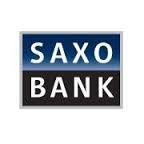
Saxo Bank, the leading Fintech specialist focused on multi-asset trading and investment, today announces the appointment of Steve Weller as CEO of the MENA Region.
Steve Weller will be based in Saxo Bank’s Dubai office and report directly to Damian Bunce, CCO of Saxo Bank.
In his new role, Steve will assume the overall responsibility to grow and develop the business and client base in the region by making Saxo Bank the first choice for traders, investors and wholesale clients in the region.
Steve has more than 25 years of international experience and know-how in the global foreign exchange market. Most recently, Steve was Managing Director and Global Head of Sberbank of Russia’s (CIB) foreign exchange business. Before joining Sberbank CIB he was the head of Foreign Exchange Asia-Pacific at Barclays PLC, based in Singapore and previous to this the global head of FX spot and forward trading at Lehman Brothers.
Commenting on his appointment, Damian Bunce, CCO of Saxo Bank, said:
“We are extremely pleased to welcome Steve on board as the CEO of the MENA region. Steve is a highly accomplished, resourceful and results-focused senior executive with a proven track record in consistently delivering robust and sustainable results. The MENA region is central to Saxo Bank’s strategy and we have a truly unique offering to bring to the market. We need to execute effectively on the many opportunities and I am very excited that Steve will lead these efforts.”
Steve Weller commented on the new role:
“I am truly excited to join Saxo Bank and very much look forward to helping develop our business in Dubai and the wider MENA region. With the financial industry’s attention increasingly turning to technology and digital client experience, Saxo’s reputation in fintech makes it the perfect place to operate in order to be at the forefront of these developments. “
“Saxo Bank provides uniquely broad and efficient access to global capital markets for its clients which is becoming increasingly relevant as clients seek to balance portfolios across geographies and asset classes.”
“Saxo also offers its technology to other banks and brokers, delivering “Banking-as-a-Service” and this in my view is a particularly interesting growth opportunity. The financial industry is at an inflection point as banks seek to replace inefficient infrastructure with more cutting edge technologies. It appears highly likely that partnerships around technology will grow in number and depth allowing these banks to service clients with a best in class client experience at a fraction of the cost of old legacy systems.”
Related News
- 03:00 am

QuantHouse, the leading independent global provider of end-to-end systematic trading solutions including innovative market data services, algo trading platform and infrastructure solutions, today announced that WH Trading, the leading global proprietary trading firm, has selected QuantHouse in order to leverage the QuantLINK and QuantFEED suite of advanced solutions.
WH Trading, the Chicago-based firm, trading the futures and options market across the US, Europe and Asian markets, is using QuantLINK, QuantHouse’s ultra-low latency, fully redundant 40G network to enable market access and delivery of market data at low latency speeds. The connectivity performance of the QuantLINK network is continually expanded upon to ensure the latest and fastest routes are available with new exchanges and alternative trading venues being constantly added to ensure that firms have access to the most extensive range of venues to enhance their trading strategies. QuantFEED handles all the upgrades and updates to ensure optimum connectivity routing to required markets at the lowest possible latency.
Salloum Abousaleh, Managing Director Americas, QuantHouse, said, “WH Trading is one of the largest market makers trading on the global markets. They have also led the field in terms of using only the latest and most advanced technology, whether built in-house or outsourced to third parties. We are therefore delighted to have been selected by WH Trading to handle some of their most critical applications,” Salloum continues, “We are seeing increasing demand for quantitative trading tools not only with innovative proprietary trading firms, but also with alternative investments, Hedge Funds, CTAs and asset managers looking to follow in the footsteps of firms such as WH Trading.”
Mike Madigan, CTO, WH Trading LLC, said, “We look to only deploy technology excellence and believe that trading performance can be mapped to the quality of trading infrastructures in place. We use QuantHouse raw exchange connectivity at a number of global exchange venues, and are very pleased with the performance of their direct connectivity offerings. From sales, to engineering, to operations, to support, QuantHouse has supplied us with high quality customer service.”
Related News
- 09:00 am

Logistics tech startup Qwyk announced the public launch of their QwykSchedules(TM) product. Qwyk's products are designed to transform the way logistics companies interact with their customers.
QwykSchedules is a new product that aims to offer a digital solution for logistics companies who want to publish and market their services online. With QwykSchedules, subscribing companies can construct their own departure schedules by setting up routing rules. They can either host it in the cloud through a fully customizable page on the Qwyk platform or integrate it into their site and TMS through APIs (Application Programming Interfaces or Web services.) Promising extremely low maintenance, Qwyk's engine uses the routing rules to compile subscriber's schedules once a customer searches and provides real-time data based on what their assigned providers offer.
"Having been involved in the logistics industry for over 10 years, both on the Business side and Technology side, I have seen first-hand the challenges companies face. One challenge specifically is in getting the often tens of thousands of services offered to be visible in a searchable way," says Founder Martyn Verhaegen. "With the advent of the Digital Freight Forwarder, who have marketed themselves as an alternative on the premise that they can provide the visibility BCO's and other parties are looking for, that their 'traditional' counterparts cannot. It is becoming increasingly important for logistics companies to fill these visibility gaps."
"Together with rates and tracking data, we believe, services guide and schedule information form the cornerstones of supply chain visibility," the Netherlands based innovator adds. "With QwykSchedules, we aim to offer logistics industry parties a low-maintenance, affordable, and reliable way to get their services and schedules online and searchable by their customers within hours."
The online product, which has been in use by a number of subscribers, provides an easy-to-use interface in which subscribers can pick the Air, Ocean FCL and LCL providers they need and link them to a powerful routing guide which constructs end-to-end and multimodal trade lanes. Shippers and other parties can then use the subscriber's dedicated front-end page to conveniently search through their schedules.
"The potential for QwykSchedules lies in the fact that this is a product that provides an output immediately consumable by subscriber's customers. Traditional sailing schedule feeds generally leave it to their customers to transform the data they provide into something that is relevant and presentable while ingesting a lot of waste-data in the process. Along with the feeds, we also provide the software to do that transformation and immediately serve solutions to customers," Martyn Verhaegen explains.
"Our objective is to have new subscribers set up with their schedules in hours, not days or weeks, handling use-cases from simple port-to-port services to complex multi-leg point-to-point moves, including configurable pre- and on-carriage schedules, across all modalities. End-to-end services are the industry's end-game and the solution can scale to fit companies of any size, from local forwarders and NVO's to global enterprises."
Related News
- 06:00 am
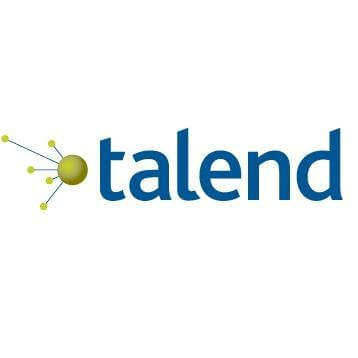
Talend, a global leader in cloud and big data integration solutions, unveiled Talend Data Streams, a free, Amazon marketplace application that simplifies and accelerates ingestion of massive volumes and wide varieties of real-time data. Released today at Talend Connect US, the company's annual customer and partner conference taking place in New York, Talend Data Streams provides self-service access to real-time data for engineers, data scientists, data analysts and other ad hoc integrators. The AWS-based, single-user application will eventually become part of Talend's existing suite of persona-based, cloud applications that enable everyone to work with trusted data.
"Innovative business insights don't happen in a vacuum. Successful data pioneers have shown that being data-driven is a 'team sport', meaning all employees need to be involved in collecting, shaping and improving the quality and trust in data," said Ashley Stirrup, CMO, Talend. "Talend Data Streams now extends that collaboration to include data scientists, data engineers and data analysts using a self-service, easy-to-use, intuitive application for collecting real-time data, so companies can move from imagination to innovation, faster."
A recent survey of more than 16,000 data professionals showed that the most common challenges to data science include: dirty data (36%), lack of management support for data science teams (27%), lack of clear direction to pursue with available data (22%), and overall access to or availability of data (22%).1 Talend Data Streams helps overcome these challenges by allowing data scientists, engineers and other analysts to:
- Jump-start data integration with a zero-install, management-free, web-based UI that has users up and running in minutes
- Rapidly ingest massive volumes of disparate, streaming and cloud data without complexity
- Accelerate pipeline development with a unique live-preview feature that displays changes in real-time
- Break the legacy cycle and extend the life of all data pipelines with the un-paralleled portability across cloud platforms powered by Apache Beam.
Delivering Trusted Data
Data is the new currency in today's digital economy. However, the economics of data are broken: data volumes continue to double each year, while the number of data workers triples, yet IT budgets remain flat-making it impossible to keep pace with growing business demands for information. In parallel, it's becoming increasingly common for disparate business units to use their own tools to collect and integrate data, leading to more information silos, or 'shadow IT', which ultimately prevents companies from reaching their data-driven potential.
Cloud-based, big data streaming technologies play a key role in helping companies utilize the cloud to scale data-driven decision making, while ensuring their most valuable asset-data-is governed, trusted, managed and accessible to a variety of employees.
"Digital business demands a consistent approach to the management of security, privacy and process compliance across enterprises. This isn't possible when 'information islands' fail to observe the standards required to ensure quality and consistency," said Ciaran Dynes, SVP of Products, Talend. "Thus, businesses need a radically different data architecture to overcome today's broken data economics and effectively put more of their data to work. Talend's mission is to liberate data from legacy infrastructures and improve its availability, quality, performance and value using citizen collaboration and the cloud."
Talend Data Streams will join the other persona-based apps currently available in Talend Data Fabric, an open source-based integration platform that combines all Talend products into a common set of powerful, easy-to-use tools for real-time or batch, data or application integration. Talend's suite of integrated, cloud-based, self-service apps are optimized for worker productivity and digital transformation. Using Talend, business and IT can collaborate on data integration and governance tasks, easily share work between apps, orchestrate stewardship tasks, increase confidence in their data and put more data to work, faster.









